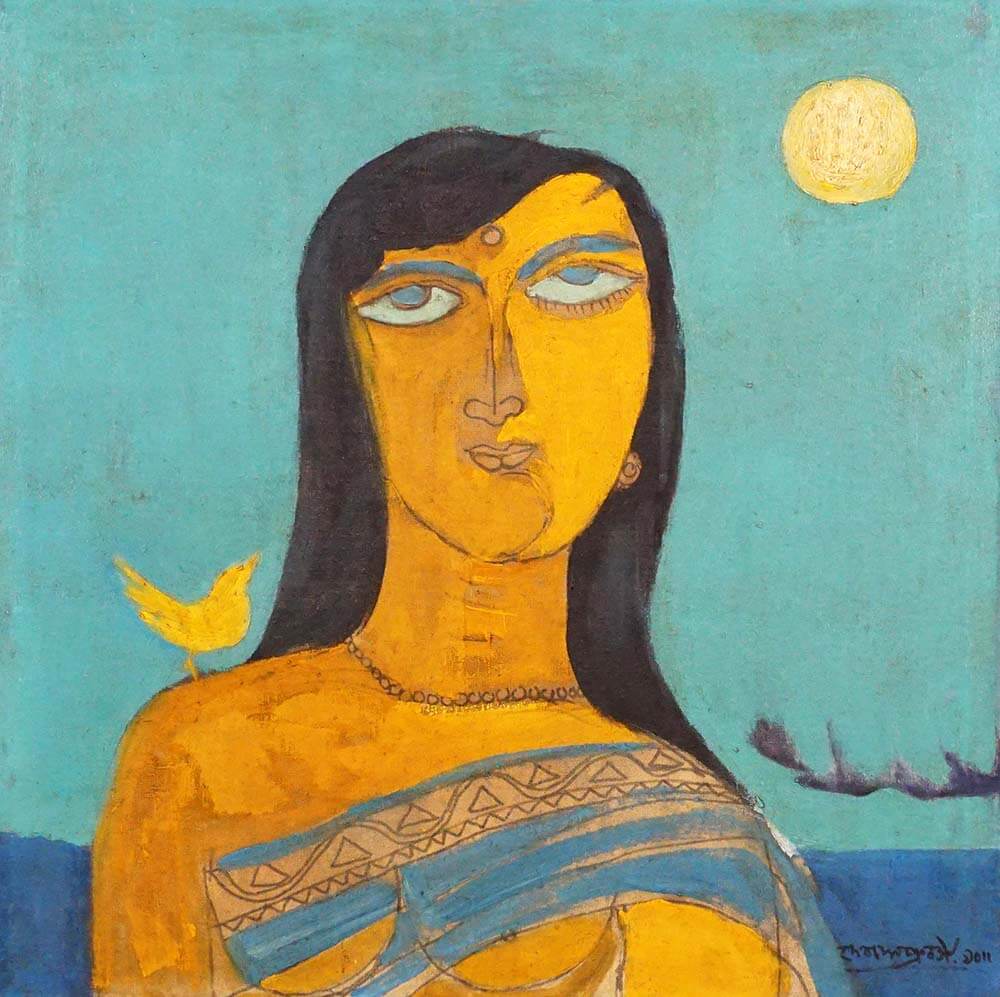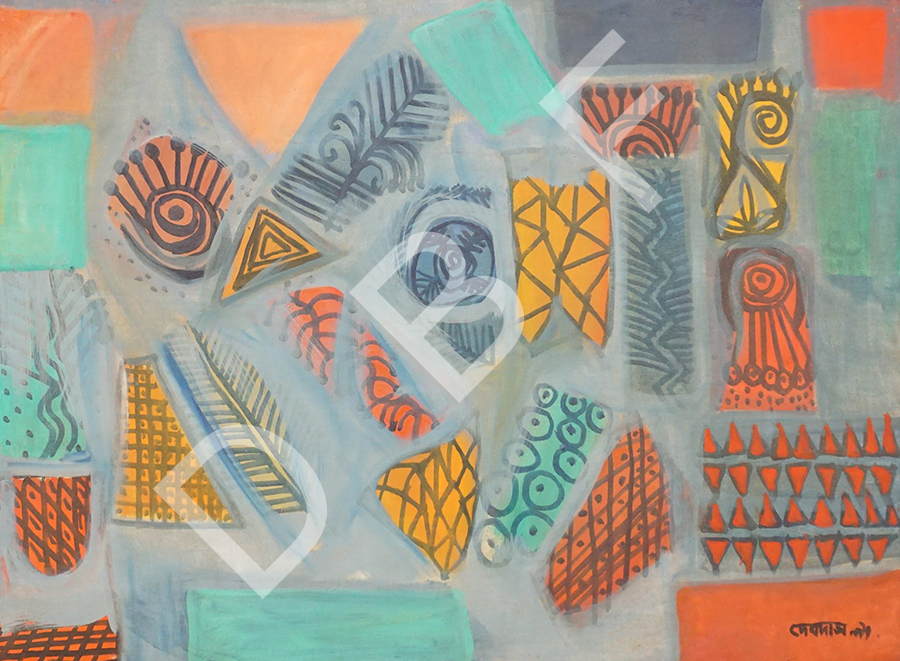“Portrait of a woman”, a 1990 painting by Debdas Chakroborty dives into the inner world of women. He brings rural motifs such as bird, moon, and boat in his painting and makes his character a part of nature. In a blue background, he painted the women in warm yellow and depicted her as a source of endless energy. He narrates women’s inseparable bond with her surrounding, connects her with nature, and reveals the mystery of life.
He incorporated folk motifs and traditional style to flesh out the women of Bengal. He devotes his energy to capture the internal turmoil, hidden joy, and the source of her being in the painting. “Portrait of a woman” narrates women as a part of nature and still standing against it.

Devdas Chakraborty
Devdas Chakraborty, a Bangladeshi artist was born in 1933 at Faridpur, Bengal Presidency, British India. Debdas Chakraborty graduated from the Government Institute of Art in Dhaka in 1956. He joined as a faculty member of the Department of Fine Arts at the University of Chittagong in 1973. After the death of his wife, he left his position at the university. Debdas received the first prize at the Warsaw International Art Workshop in 1978. Five of his engravings represented Bangladesh at the XIX International Biennale at Sao Paulo in 1987. He received the Bangladesh Charushilpi Honour award and the Ekushey Padak in 1990. He died in 4 february, 2004 at the age of 81.
Portrait of a Women

Artist Art Style
Devdas Chakraborty began painting in oil and watercolor mediums. His initial works were figurative, and then in semi-abstracted and abstract. He later switched his interest to drawing and subsequently in printmaking. His painting had an elusive quality, an aggregation of forms often suggestive of human figures. One of the techniques that he used frequently was to start off with figurative images and gradually obliterate them to produce virtually abstract works. He was greatly influenced by liberal and secular political ideology.

